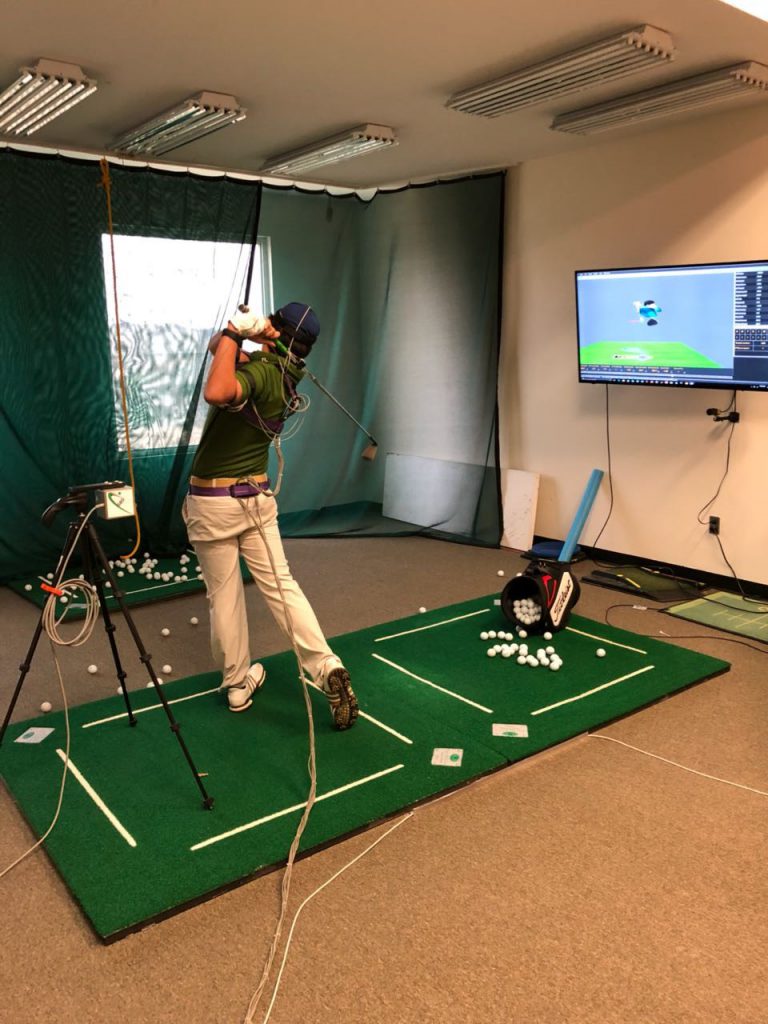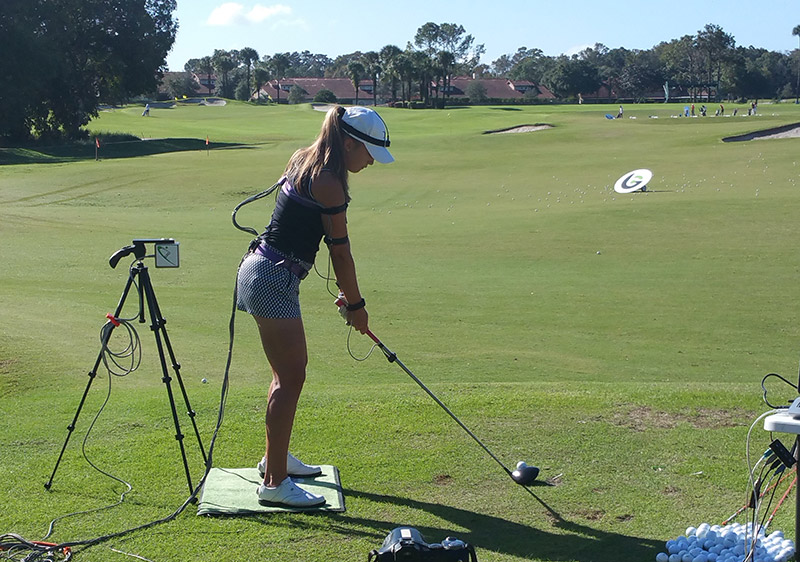
How It Works
3D SWING ANALYSIS
Precise sensors are used to capture data of each swing performed. The GBD System collects the data for analysis.
BIOFEEDBACK TRAINING
With precise information a training plan is developed to help you rehearse proper movement patterns for your swing.
CUSTOMIZED REPORT
A customized report is created to highlight the strengths and weaknesses of your golf swing mechanics.
INSTANT RESULTS
Golf BioDynamics takes out the guessing and therefore, the results are instantaneous for you to improve your game.
TYPES OF SESSIONS
3D SWING ANALYSIS
There are several easy-to-follow procedures that describe the swing analysis process. The initial client conversation focuses on on what has gone on before (history of the player) and the key goals that they have for the sessions (e.g., increased club head speed; better distance control with the wedges; greater variety with finesse wedge shots, etc.).
Once the background and goals have been established, the following steps are completed:
- Various input data are required from the golfer (e.g., contact details, height, weight, date of birth, etc.)
- Attach sensor harness to the golfer ensuring that the cables are secured, the sensor movement relative to the golfer’s body are minimized and that the golfer feels nothing is too tight or too loose.
- Hit warm up shots to get comfortable with the harness and sensors
- Calibrate. In this step, 25 anatomical landmarks, in close proximity to the sensors that are attached to the body, are digitized. The calibration process, which MUST be done very carefully and accurately, creates and 11-segment model of the upper body of the golfer. The movement of the segments then provide the data for:Creation of a fully-rendered 3D avatar of the golfer.
- The input data for creating a report that is customized for the activity (e.g., long game, pitching or putting)
- Real-time biofeedback training on hundreds of measured variables at any point in time during the swing
- Multiple (typically 6 shots) swings are captured and stored on file. During the data capture, Dr. Neal will often look at various graphs and positional data on a shot-by-shot basis to allow him to build an accurate and quantitative picture of the swing
- Report generation. Averaged data of both discrete data points at key time points in the swing/stroke as well as time series data will be used as the basis on which to make recommendations and interpretations
- Notes are written into the summary section of the report and emailed to the client as a PDF.
Optional: if the client and or coach choose to, the session would often then move into biofeedback training. Real-time audio biofeedback on one or more of the areas selected for improvement or further investigation is given so that the client can begin to gain a sense of the correct movement pattern or position/posture.

INSTANT RESULTS
The benefit of working with Golf BioDynamics is that there is no guessing and therefore, the results are instantaneous. Simply put, you come for a session, get measured and then receive a plan to improve. Part of that plan is getting a feel for what you need to do differently in your swing. Knowing cognitively is one thing but the real key to learning is being able to feel the correct movement. The use of biofeedback training allows you to get that feeling immediately.

BIOFEEDBACK TRAINING
Biofeedback training is used to enhance the learning experience by giving you accurate and precise information as you are moving so that you can begin the process of changing your movement patterns. Typically, an audio tone is created when you move correctly (i.e., move into a desired position or posture at a selected point in the swing). Occasionally visual feedback is used too although this form of feedback is usually given after you make a swing or a movement. Biofeedback training can be enhanced by using resistance (e.g., rubber bands or something similar) coupled with audio feedback to magnify the sense of body awareness.

CUSTOMIZED REPORT
While there are several different report styles, the key for you is to provide you with a customized one that highlights the strengths and weaknesses of your mechanics (swing, short game or putting). Summary notes are included on page one of the report so that you can quickly be reminded of the key aspects to focus your training on. Throughout the rest of the report, your average data are compared to age and sex-appropriate ideal ranges. Your data are color-coded to highlight both your good qualities (green and yellow “numbers”) and those aspects that need attention (red “numbers”). This traffic light coding makes interpreting the report simple!







